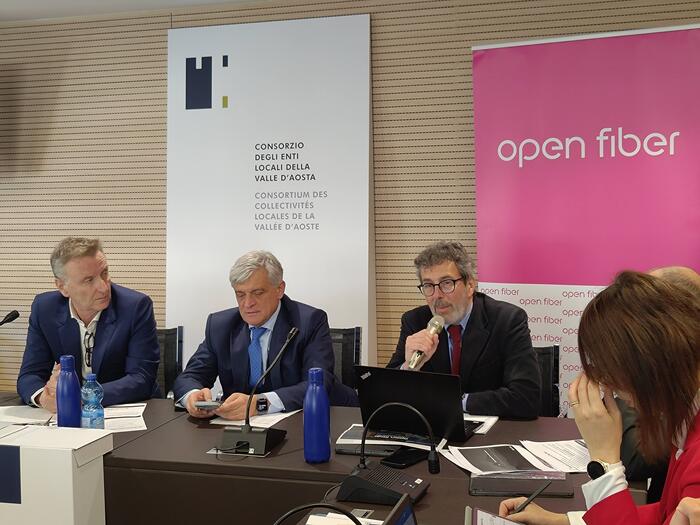Enlarge image
Fiber optic cable (in Oberflockenbach, Baden-Württemberg 2020): "The demand for high bandwidths is growing continuously"
Photo: Uwe Anspach / dpa
Deutsche Telekom plans to use fiber optic cables to connect significantly more people to the fast Internet than before.
By 2024, these connections should be available in ten million German households, said CEO Tim Höttges at the annual general meeting.
That is eight million more than before.
All households should be able to use the fiber optic network by 2030.
However, expansion by competitors is included here.
Höttges was convinced of the economic potential.
"The demand for high bandwidths is growing steadily," he said.
To do this, Telekom has to increase its pace significantly: In 2020, the group was laying fiber optic cables for 0.6 million households.
The number is expected to rise to 2.5 million households per year by 2024.
Billions in investments are only partially worthwhile
Telekom's project is expensive.
By 2024, fiber-optic spending is expected to increase from 1.5 billion euros annually to 2.5 billion euros.
Frederik Beckendorff from the Deutsche Schutzvereinigung für Wertpapierbesitz (DSW) supports Telekom's fiber optic course.
What is critical, however, is the long time horizon of up to 15 years until the costs of investments are offset by income from customer contracts.
It is also uncertain "to what extent customers are willing to pay more for more service".
The competitor Vodafone also offers gigabit contracts, but relies on TV cable on the last stretch to the apartment and not on fiber optics.
Vodafone's prices are lower.
However, pure fiber optic internet is considered to be more stable than TV cable.
When practically the whole street is streaming films or downloading large data packets in the evening, the transmission speed per household does not decrease as much with FTTH as with TV cables.
ime / dpa-AFX / Reuters









